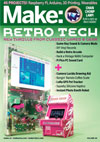Just where and when humans first observed the chemical reaction between oil and potash is unknown. Legend says it may have occurred in ancient Rome, on Sapo Hill, in an unusual scenario where a creek flowed over a deposit of wood ash and animal fats, created through many years of sacrificial fires and beasts incinerated for the gods. This mixture of oil, ash and water, so goes the tale, had its effect on the local populace, for whom cleanliness came noticeably easily when bathing in the current downstream of the sacrifice site. Other centers of soap origin may have existed – but regardless of who first saw the chemical reaction in action and of how the knowledge spread through the world, we can safely assume this: By observation of nature, people learned to recreate the chemistry of water, potash and oil, thereby producing the first liquid soaps.
Subsequently, standards of cleanliness grew and spurred the rise of industries. Solid soaps were innovated in the 19th century, facilitating shipping and selling. And whereas soaps had once been pure and natural blends, the soap industries of the 19th and 20th centuries introduced problematic chemicals to the equation, like propyl alcohol, limonene, benzaldehyde, methylene chloride and many more. Today, some soap ingredients are derived from animals rendered in factories, while others are byproducts of petroleum. Many are toxic, and some are carcinogenic. (Notice how large commercial soap brands tend to list their product ingredients on the back of the package.)
All-natural, plant-oil-based soaps provide a minimalistic alternative to additive-heavy cleaners from larger manufacturers – but one downside remains: the disposable, one-time-use plastic bottles and packaging. Speaking of the packaging, pick up one of these bottles the next time you visit your local natural foods store and read the list of ingredients (which is likely displayed candidly on the front). It probably mentions water, saponified oils and little, if anything, else.
In fact, making soap at home is easy and not much more complex than making bread and certainly simpler than brewing beer. In its most basic form, soap consists of just three components – a strong base (usually potash or, alternatively, lye, which we’ll be using), oil and water. Blended at the right proportions and temperatures, these ingredients produce a chemical change called saponification which renders the lye, normally caustic and dangerous when mixed with water, entirely benign while breaking the oils apart and eliminating their cloying greasiness. And although a curing stage lasts nearly a month while the soap dries and hardens, the first step – and the most logistically, physically and mentally demanding – can take just 30 minutes for practiced home soap-makers.
Now consider that a year’s supply can be made in a batch, and that each bar will cost just over a dollar, and that the soap contains no lingering poisons – and one by one they mount: the good and healthy reasons to free oneself from chemical industries and never buy soap or shampoo again.



